In the realm of professional audio equipment, few microphones have garnered as much acclaim and recognition as the Shure SM7B. Renowned for its versatility, impeccable sound quality, and robust build, it’s no wonder that this microphone has become a staple in studios worldwide. However, while the Shure SM7B is undeniably a top-tier choice, there are other fish in the sea.
Whether you’re on a budget, looking for specific features, or simply curious about what other options are out there, seeking an alternative can be a wise decision. In this comprehensive guide, we’ll delve deep into some of the best Shure SM7B alternatives, comparing their features, pros, and cons and helping you make an informed choice for your unique needs.
So, strap in, and let’s embark on this sonic journey together!
Related: Best Microphones For Recording in Podcasting
Contents
Why Look For An Alternative To The Shure SM7B?
The Shure SM7B, while exceptional, might not be everyone’s cup of tea. There are several reasons one might look beyond this iconic broadcast mic:
Price Point Considerations

Image by Freepik
The Shure SM7B comes with a price tag that reflects its professional-grade quality. However, not everyone requires such a high-end microphone, and some might be seeking a more affordable mic option without compromising too much on quality.
Specific Use Cases and Requirements
While the SM7B is a dynamic mic, certain recording scenarios or vocal types might benefit from different microphone characteristics, such as a condenser mic. For instance, a podcaster might have different requirements than a singer or a voice-over artist.
Availability and Brand Preferences
Sometimes, the SM7B might be out of stock, or perhaps you have a loyalty to another brand based on past experiences. Brand preferences can play a significant role in the decision-making process.
Shure SM7B Alternative: Our Top Picks
Let’s look at the top alternatives to the Shure SM7B.
1. Shure SM58
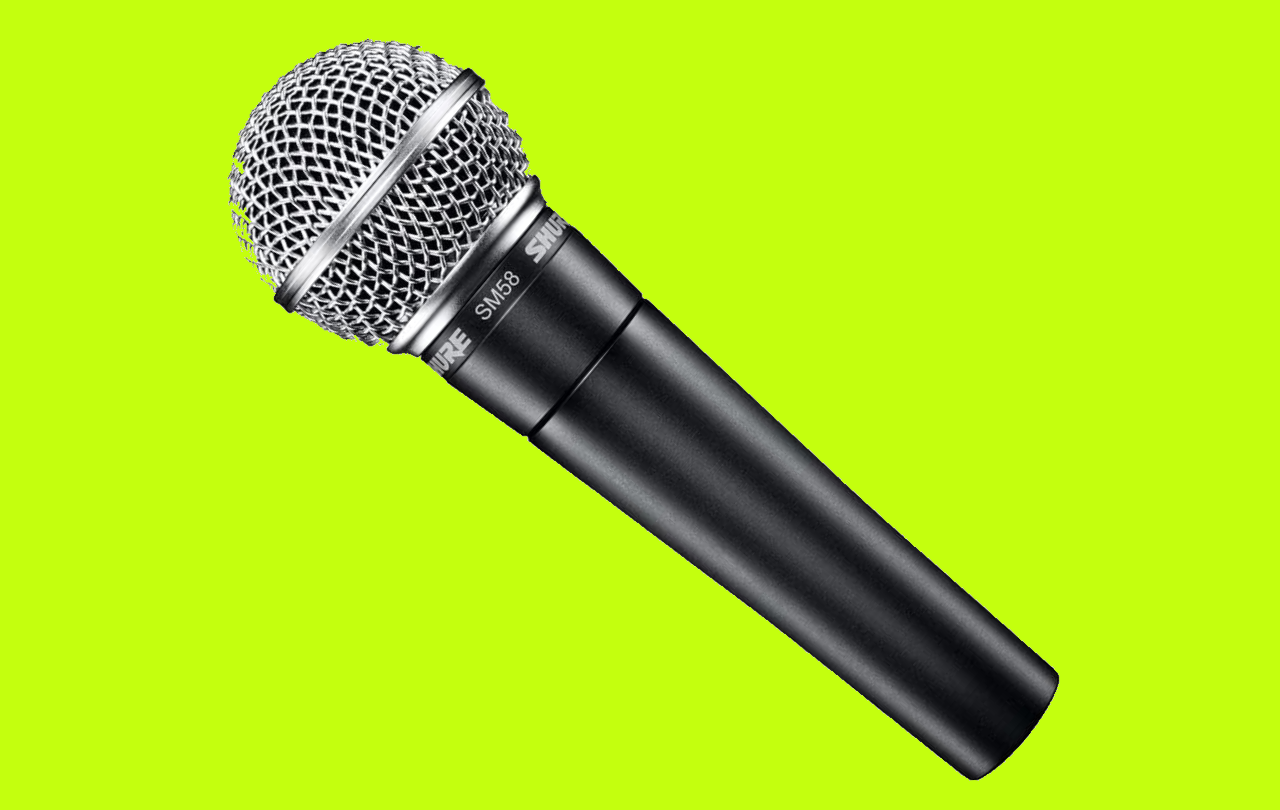
The SM58 has a spherical mesh grille and built-in pop filter to keep any unwanted noise out of the mix. Image Source.
The Shure SM58 is another offering from the renowned Shure brand, often considered the go-to microphone for vocalists around the world. With its legacy spanning decades, the SM58 has proven its mettle in countless live performances and studio recordings.
Related: Shure SM7 vs SM7B
Key Features
- Unidirectional (Cardioid) Dynamic Vocal Mic: Tailored for professional vocal use in live performances, sound reinforcement, and studio recording.
- Tailored Vocal Response: Delivers a sound that has become a world standard for singing or speech.
- Built-in Spherical Filter: Effectively minimizes wind and breath ‘pop’ noises.
- Cardioid Pickup Pattern: Isolates the main sound source while minimizing background noise.
- Rugged Construction: Ensures durability and longevity.
- Shock-mount System: Reduces handling noise and vibrations.
- Includes: SM58 cardioid dynamic vocal microphone, A25D swivel stand adapter, and storage bag.
Pros
- More affordable than the SM7B.
- Proven track record in live performances.
- Effective in minimizing background noises.
Cons
- Might not have the same studio-grade sound quality as the SM7B.
- Lacks some of the advanced features of the SM7B.
2. Beyerdynamic M88 TG
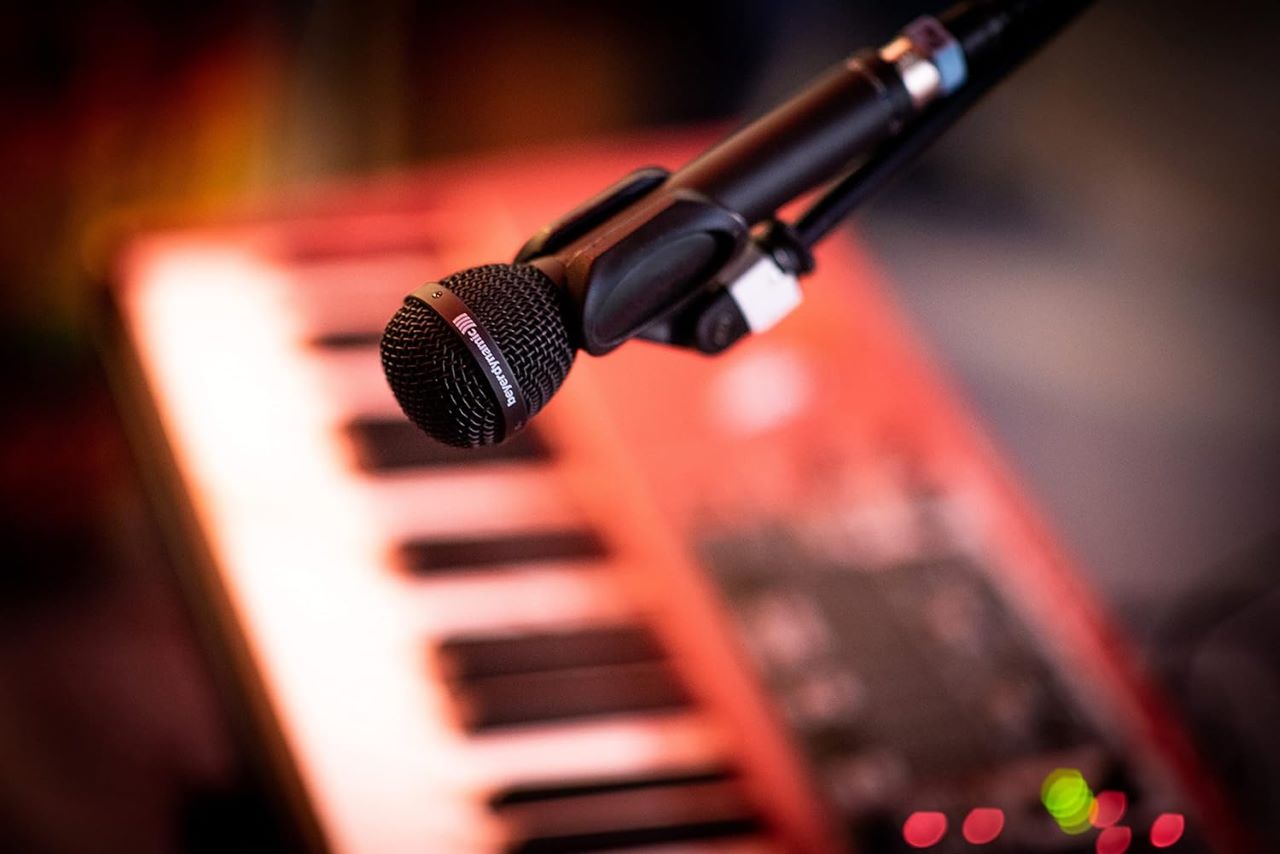
Beyerdynamic M88 TG has highly defined hypercardioid polar characteristic and sensitive, accurate response. Image Source.
The Beyerdynamic M88 TG is a dynamic microphone known for its precise hypercardioid polar pattern and sensitive response. Designed for both vocals and instruments, it’s a versatile choice for those looking for a microphone that can handle a range of applications.
Key Features
- Dynamic Microphone with Hypercardioid Polar Pattern: Offers a highly defined sound capture, ensuring that the sound source is isolated from background noise.
- Extended Frequency Range: Features a gentle presence boost and exceptional bass reproduction, making it suitable for both vocals and instruments.
- High Gain Before Feedback: Ensures clarity even in loud environments.
- 20 dB Integrated Hum-buck Coil: Reduces interference and noise for a cleaner sound.
- High SPL Handling: Can handle loud sound sources without distortion.
- Robust Construction: Made with durable materials for longevity.
- Package Includes: Microphone, microphone clip, and storage bag.
Pros
- Hypercardioid pattern offers even better isolation of the sound source.
- Extended frequency range suitable for a variety of applications.
- High gain ensures clarity in challenging environments.
Cons
- Pricier than some other alternatives.
- Might require additional equipment or settings adjustments for optimal performance.
3. Audio-Technica AT2020
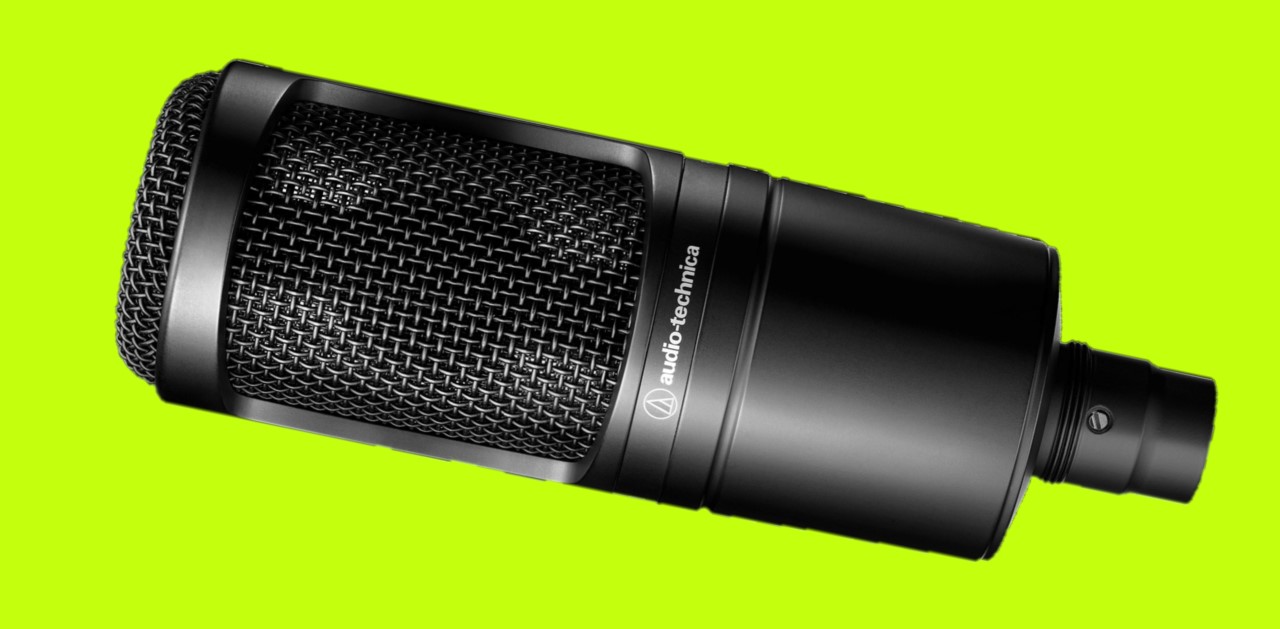
AT2020 contains a delicate diaphragm that captures the vibrations of the sounds you’re wanting to record. Image Source.
The Audio-Technica AT2020 is a product from the esteemed Audio-Technica brand, known for delivering high-quality audio equipment. This cardioid condenser microphone is designed for studio applications, particularly for vocal recordings. Its reputation for clarity and detail has made it a popular choice among budding and professional artists alike.
Related: SM7B vs AT4040
Key Features
- Cardioid Polar Pattern: This design ensures that the microphone captures sound from the front while minimizing noise from the sides and rear.
- Wide Frequency Response: Ranging from 20Hz to 20kHz, it captures a broad spectrum of sounds, making it versatile for various recording applications.
- High SPL Handling: With a maximum sound pressure level of 144 dB, it can handle louder sound sources without distortion.
- Low Mass Diaphragm: Custom-engineered for elongated frequency response and superb transient response.
- Rugged Construction: Built for durability, ensuring longevity even with regular use.
- Includes: AT2020 cardioid condenser microphone, stand mount, and protective pouch.
Pros
- Condenser design offers a brighter and more detailed sound profile.
- More affordable than the SM7B.
- Versatile for various recording applications due to its wide frequency response.
Cons
- Requires phantom power, unlike the dynamic SM7B.
- Might be more sensitive to background noises compared to the SM7B.
- Not as rugged as some dynamic microphones like the SM7B.
4. Electro-Voice RE20
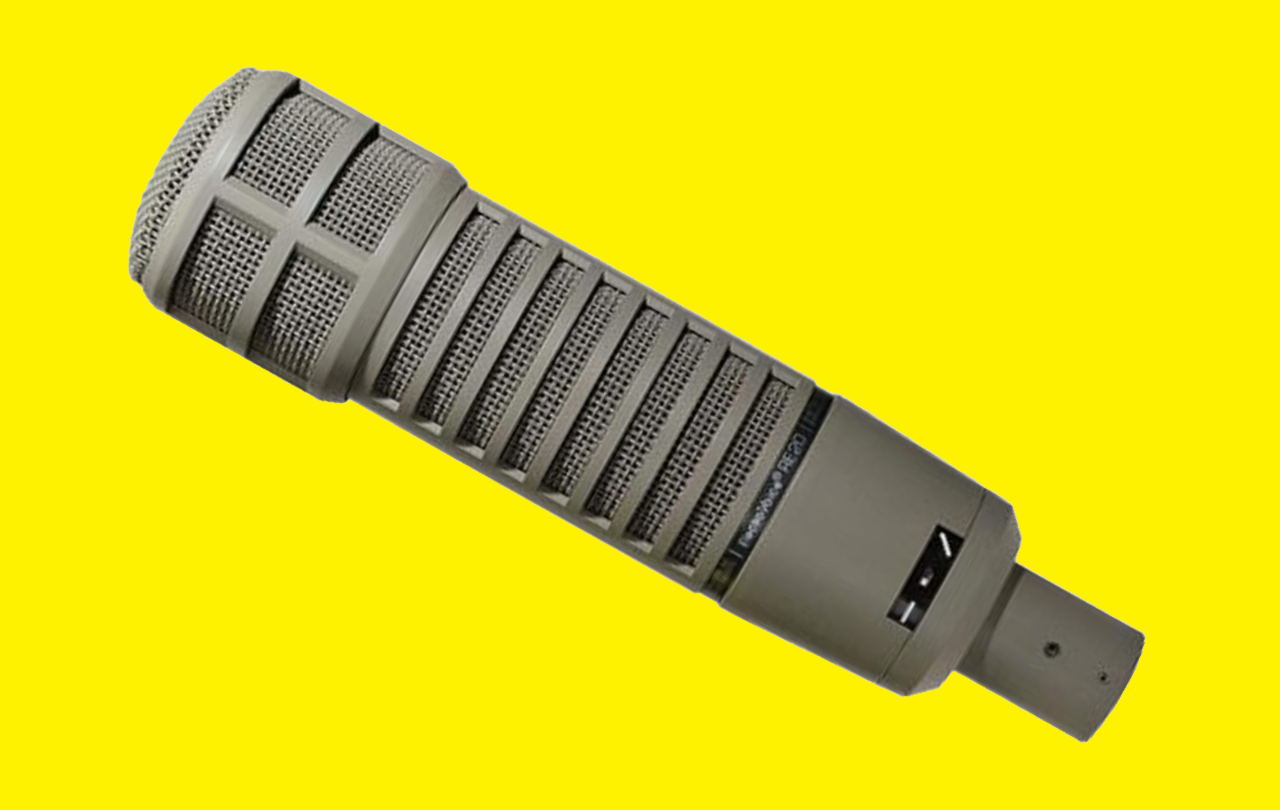
The RE’s variable-D design and heavy-duty internal pop filter excel for close-in voice work. Image Source.
The Electro-Voice RE20 is a dynamic cardioid microphone that has become a staple in the broadcasting industry. Often favored by podcasters, sound engineers, and radio DJs, the RE20 is known for its professional sound quality and versatility. It’s not just limited to voice work; many musicians also use the RE20 for instrument recording due to its ability to capture a wide range of frequencies.
The Electro-Voice RE20 has been a favorite in the broadcasting world for years, and its reputation is well-deserved. Whether you’re a podcaster, musician, or broadcaster, the RE20 offers a level of quality and versatility that’s hard to beat.
Key Features
- Professional Quality Dynamic Cardioid Microphone: Offers a performance akin to studio condenser microphones.
- Classic FM Radio Voice Sound: Produces a smooth, natural, and controlled sonic character.
- Variable-D Design and Internal Pop Filter: Excellently suited for close voice work. The internal shock mount of the element minimizes vibration-induced noise.
- Steel Case and Hum Coil: Provides exceptional magnetic shielding and protects against line hum.
- Versatility: Ideal for podcasts, voice work, audiobook narration, talk shows, sports announcers, radio, broadcasting, and music production.
Pros
- Renowned for its ability to capture deep vocal tones.
- Exceptional at isolating background noise.
- Versatile for both voice and instrument recording.
Cons
- Might be on the pricier side for some users.
- Some users have reported issues with noise isolation degrading over time.
5. Sennheiser Professional MD 421-II
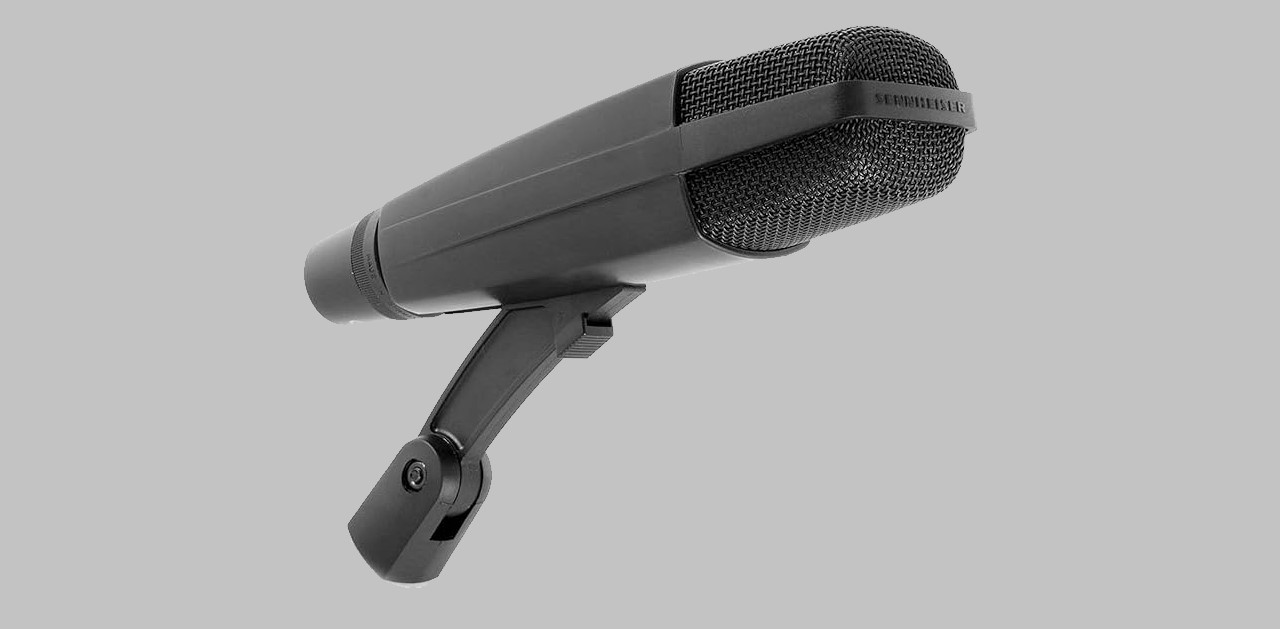
The MD 421-II has a large diaphragm, dynamic element handles high sound pressure levels, making it a natural for recording guitars and drums. Image Source.
The Sennheiser Professional MD 421-II is a dynamic microphone that has been a favorite among professionals for decades. Known for its versatility, the MD 421-II is often used in studios for recording drums, guitars, and vocals. Its full-bodied cardioid pattern and five-position bass control make it an excellent tool for both studio recording and live sound applications.
Key Features
- Dynamic Microphone with Cardioid Pickup Pattern: Ensures focused sound pickup and reduces ambient noise.
- Five-Position Bass Roll-Off Switch: Allows users to tailor the microphone’s frequency response for different applications.
- Rugged Design with Glass Composite Housing and Hardened Stainless Steel Basket: Ensures durability and reliability for long-term use.
- Excellent Feedback Rejection: Ideal for live sound applications and stage performances.
- Versatile Applications: Suitable for recording drums, guitars, vocals, and more.
Pros
- Renowned for its clear and detailed sound quality.
- Exceptional feedback rejection makes it ideal for live performances.
- Versatile applications, from studio recording to broadcasting.
Cons
- Might be bulkier compared to other microphones.
- Some users might find the five-position bass control switch a bit complicated.
6. AKG Pro Audio C214
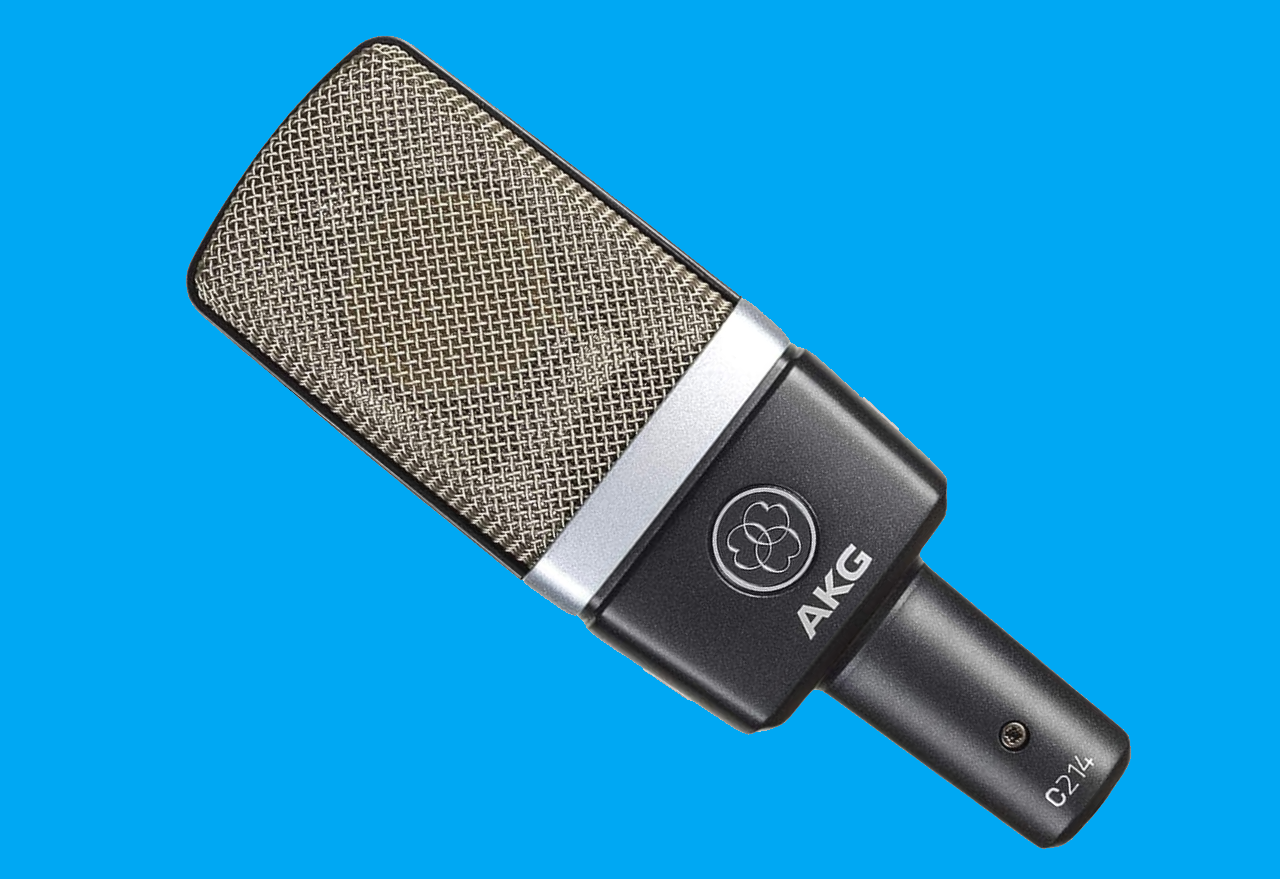
The C214 has switchable 20Db attenuator and bass-cut filter for close-up recording and reduction of proximity effect. Image Source.
The AKG Pro Audio C214 is a large-diaphragm condenser microphone designed to provide a cost-effective alternative to the high-end C414 family. It captures sound by combining one capsule of the legendary C414 dual-capsule system. The C214 is perfect for solo instruments and vocal recordings, offering a detailed, upfront sound.
Key Features
- Large-Diaphragm Condenser Microphone: Ensures detailed and clear sound capture.
- Cardioid Pickup Pattern: Focuses on the sound source and reduces background noise.
- Integrated Suspension: Reduces mechanical noise and resonances for a clearer sound.
- Robust Double Mesh Grille: Protects the microphone from hits and drops.
- Wide Frequency Range: Captures every nuance of the source sound, making it ideal for vocals and solo instruments.
Pros
- Offers a detailed and upfront sound, perfect for vocals and solo instruments.
- Durable construction with a robust double mesh grille.
- Wide frequency range captures the nuances of the source sound.
Cons
- Being a condenser microphone, it requires phantom power.
- Might be more sensitive to background noise compared to dynamic microphones like the SM7B.
7. Logitech Blue Sona Active Dynamic XLR
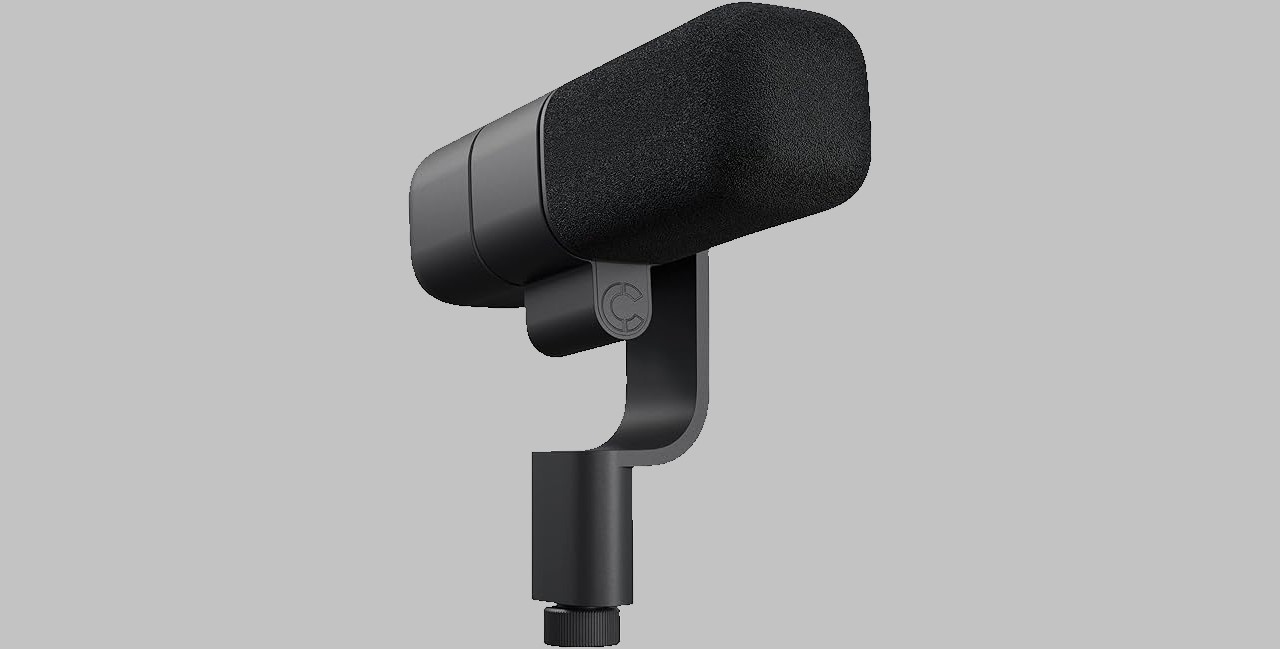
Blue Sona streaming microphone reinvents the traditional dynamic XLR mic with advanced tech and a creator-first design for a true studio-quality stream experience. Image Source.
The Logitech Blue Sona Active Dynamic XLR microphone is a versatile microphone designed for both professional and amateur use. With its active dynamic technology, it offers a blend of the natural sound of dynamic microphones and the detailed clarity of condenser mics. It’s a perfect choice for podcasters, streamers, and musicians who want a reliable and high-quality sound.
Key Features
- Active Dynamic Technology: Combines the benefits of dynamic and condenser microphones.
- Cardioid Pickup Pattern: Focuses on the main sound source and minimizes background noise.
- Built-in Pop Filter: Reduces plosive sounds for clearer voice recordings.
- Rugged Construction: Ensures durability and longevity.
- XLR Connection: Offers professional-level sound quality and compatibility with various audio interfaces.
Pros
- Versatile microphone suitable for various applications, from podcasting to music recording.
- Active dynamic technology provides a natural and clear sound.
- Built-in pop filter enhances voice clarity.
Cons
- Might require additional equipment or settings adjustments to achieve the desired sound.
- Some users might find the design bulkier compared to other microphones.
8. Rode Procaster Broadcast Dynamic Vocal Microphone
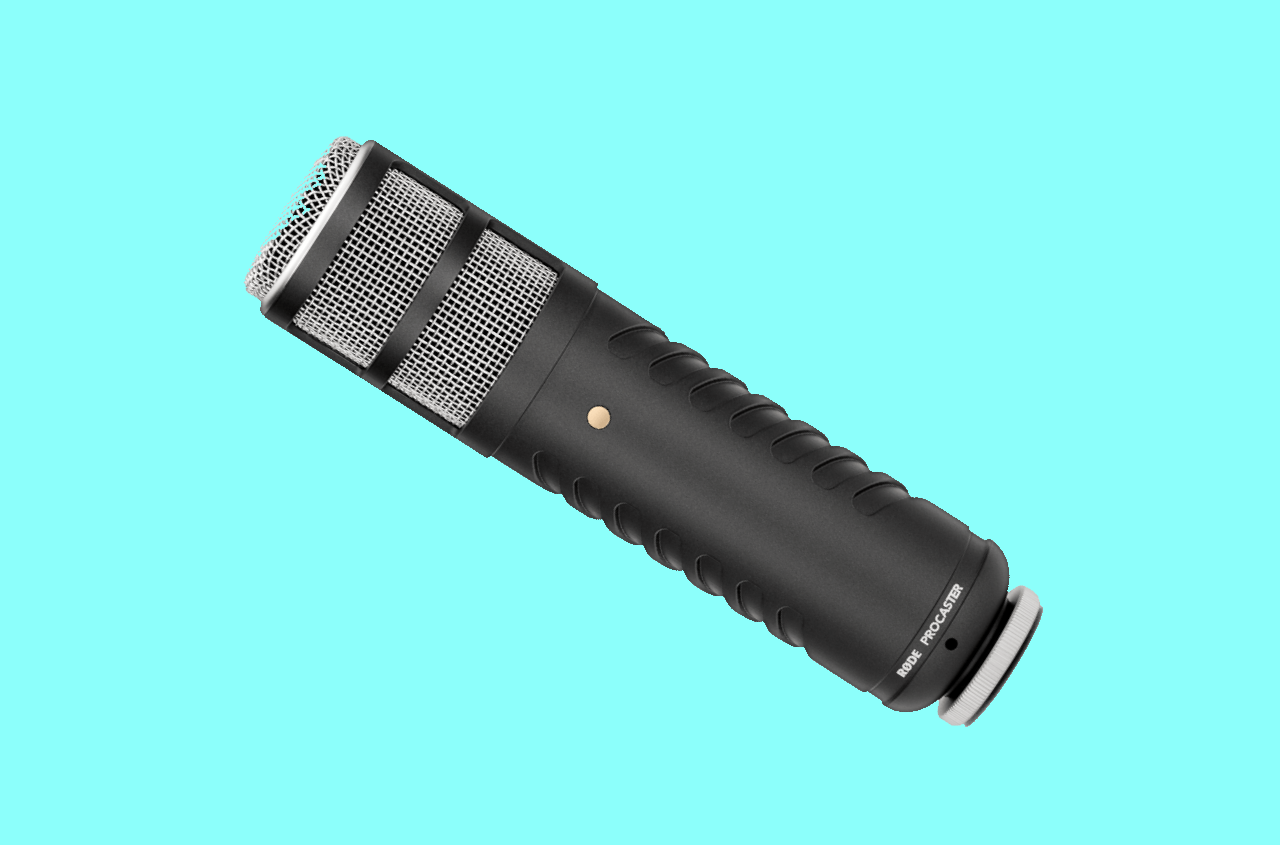
The Procaster has internal pop filter Integrated capsule shock mounting. Image Source.
The Rode Procaster Broadcast Dynamic Vocal Microphone is a professional-grade microphone specifically designed for voice applications in broadcasting environments. With its tight polar pattern and tailored frequency response, it offers a rich, full-bodied sound that is perfect for podcasters, radio hosts, and voice-over artists. Its robust construction ensures that it can withstand the rigors of daily use.
Related: Rode Procaster vs Shure SM7B
Key Features
- Tailored Frequency Response: Designed specifically for voice applications, ensuring a rich and clear sound.
- Tight Polar Pattern: Minimizes ambient noise and focuses on the main sound source.
- Internal Pop Filter: Reduces plosive sounds and sibilance, enhancing voice clarity.
- Robust Construction: Built to last with a durable metal body.
- Integrated Shock Mounting: Reduces handling noise and vibrations.
Pros
- Specifically designed for voice applications, making it ideal for broadcasting.
- Durable construction ensures longevity and reliability.
- Internal pop filter and shock mounting enhance sound quality.
Cons
- Might require an external preamp to achieve optimal sound levels.
- Some users might find it heavier than other similar microphones.
Factors To Consider When Choosing An Alternative
When it comes to selecting the perfect microphone, there are several factors to consider. While the Shure SM7B is a fantastic choice for many, it might not be the ideal fit for everyone. Here are some crucial aspects to keep in mind when looking for an alternative:
Sound Quality And Clarity
The primary function of a microphone is to capture sound, so it’s essential to prioritize sound quality and clarity. This is especially true if you’re recording vocals or instruments where every nuance matters.
- Frequency Response Tailored: Ensure the microphone can capture a broad range of frequencies, from the deep bass notes to the high treble ones.
- Sensitivity: A microphone’s ability to pick up quiet sounds without cranking up the gain is crucial. This ensures a cleaner recording with less noise.
- Noise Isolation: Look for mics that can effectively isolate the desired sound source from background noises, especially if you’re recording in a non-studio environment.
Sound quality can make or break a recording. Whether you’re podcasting, singing, or recording instruments, ensure the microphone you choose delivers clear and crisp audio.
Durability And Build Quality

Image by Freepik
A microphone is an investment, and you’d want it to last. Durability is especially crucial if you’re frequently on the move or use the microphone in various settings.
- Material: Mics made of robust materials like metal tend to last longer than those made of plastic.
- Shock Resistance: Some microphones come with built-in shock mounts that protect the mic from physical shocks and vibrations.
- Weather Resistance: If you’re recording outdoors, consider a microphone that can withstand different weather conditions.
Remember, a durable microphone not only lasts longer but also ensures consistent sound quality over time.
Compatibility And Connectivity
Your microphone should seamlessly integrate with your existing setup. This means considering the devices you’ll connect the microphone to and the software you’ll use.
- Connection Type: Whether it’s XLR, USB mic, or 3.5mm, ensure the microphone’s connection type matches your equipment.
- Software Compatibility: Some microphones come with proprietary software. Ensure it’s compatible with your operating system and recording software.
- Power Requirements: Some mics need phantom power. Ensure your equipment can provide this if necessary.
Before purchasing, always check the microphone’s compatibility with your existing gear to avoid any unpleasant surprises.
Additional Features And Accessories
Sometimes, it’s the little extras that make a difference. These can enhance your recording experience and save you money in the long run.
- Integrated Pop Filter: These help reduce plosive sounds, ensuring a cleaner recording.
- Carrying Case: If you’re always on the move, a protective case can be invaluable.
- Adjustable Stands: These allow you to position the microphone optimally, ensuring the best sound capture.
- Onboard Controls: Features like gain control, mute buttons, and headphone jacks can be incredibly convenient.
When comparing microphones, consider the additional features and accessories they come with. They can add significant value and enhance your recording experience.
Conclusion: Making The Right Choice For Your Needs
Choosing the perfect microphone is a blend of art and science. While technical specifications and features play a significant role, personal preferences, and specific use cases can’t be ignored. The Shure SM7B, with its stellar reputation, sets a high benchmark in the audio interface industry. However, as we’ve explored, there are several worthy alternatives, each with its unique strengths.
When making your decision, it’s essential to consider your primary use case. Are you a podcaster, a singer, a voice-over artist, or perhaps an instrumentalist? Each scenario might benefit from a different microphone’s characteristics. Additionally, factors like budget, brand loyalty, and specific features can influence your choice.
Remember, the best microphone isn’t necessarily the most expensive or the most popular. It’s the one that fits your needs, integrates seamlessly with your setup, and elevates your audio experience. Take your time, do your research, and trust your ears. With the right information and a clear understanding of your requirements, you’ll undoubtedly make the right choice for your unique audio journey.